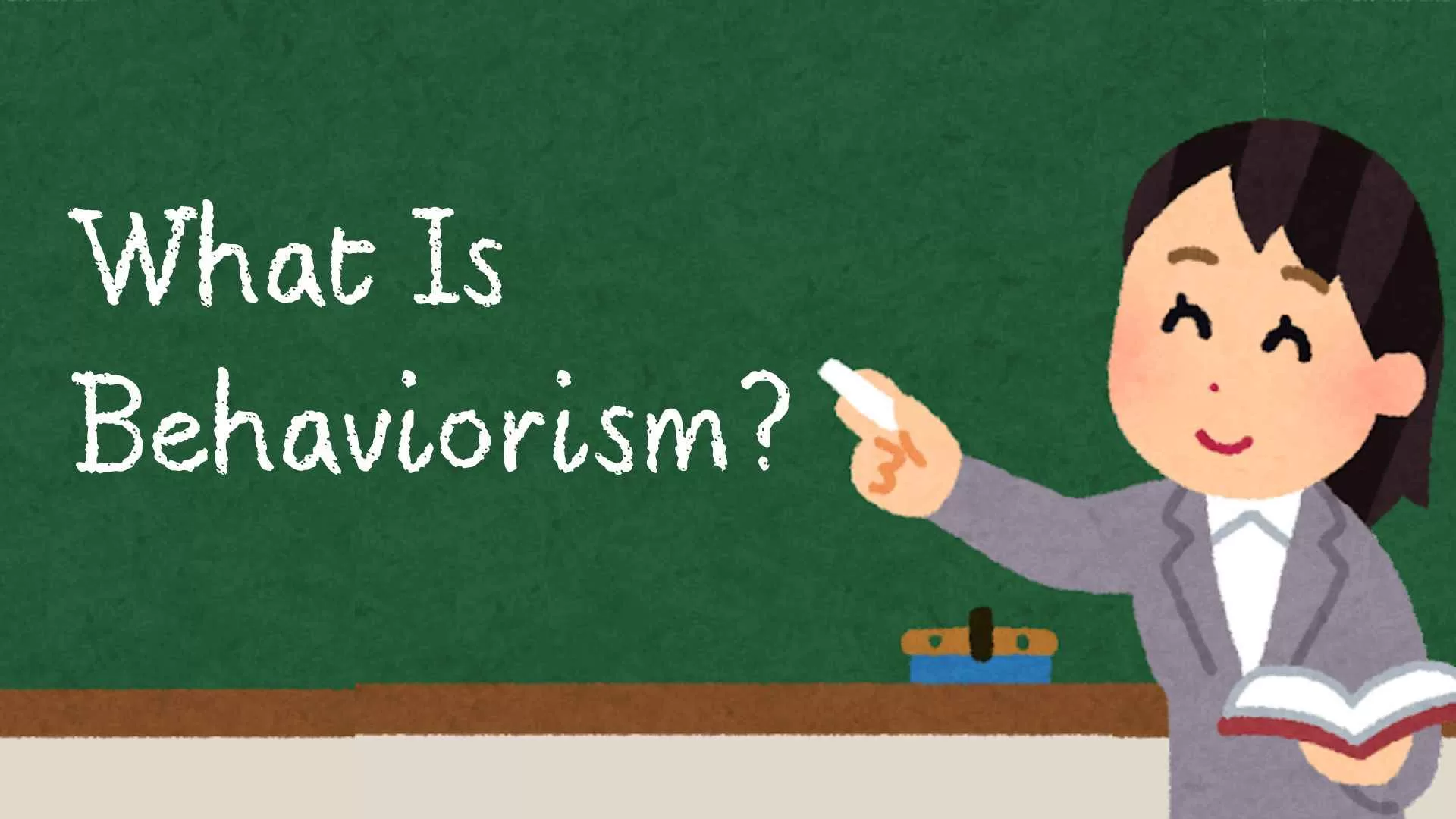Learn how behaviour is shaped, reinforced, and learned, one observable action at a time.
Whenever you hear about learning, you imagine a boy reading, listening, or even reflecting on an internal process. But what if I tell you that the core foundation of a modern learning psychology starts with what can always be seen rather than feeling it? Surprising, isn’t it? Well, that’s where behaviorism comes in.
Discovered in the early 20th century, behaviorism has shifted its psychological focus from the unseen mind to observable behavior, making the statement that what people do actually shows more than what they think. From Pavlov’s dogs salivating at a bell to Skinner’s rats pressing a lever for rewards, behaviorism gives an internal structure that’s rooted in evidence and outcomes.
Now, it influences through classrooms, therapy sessions, and even in digital learning platforms, which reminds us that understanding behaviour isn’t about having observation; it’s about having a major transformation.
Defining Behaviorism: Learning Through Action
Let’s first go over the fundamentals before relocating. Psychological theory known as behaviorism argues that learning comes directly from environmental responses; in other words, people learn as something in their surroundings motivates, rewards, or even deters their own actions. Behaviorism is fundamentally concerned with visible behaviour, events we may really view and measure—unlike any theories investigating thoughts, feelings, or objectives.
This makes psychology even more objective and science-specific, making the way for an experimental approach to know how habits take place, how motivation is activated, and how people adapt. Behaviorists think that learning isn’t just about uncovering inner desires; it’s about conditioning and shaping behavior with reinforcement and repetition. These ideas have turned not only education but also advertising, leadership, and even artificial intelligence.
Why Behaviorism Still Matters Today
Though psychology has changed to incorporate cognition, emotion, and neuroscience, the principles of behaviorism stay strong. Teachers still use this reward system to encourage enough participation. Therapists apply behavioural techniques to help clients overcome fears. Enterprises use reinforcement models to make productive habits, knowing that behaviorism helps us to see that change doesn’t always need introspection; sometimes, it starts with one simple action and the right kind of reinforcement.
The Origins and Key Thinkers of Behaviorism
Understanding the scholars who actually molded behaviorism and the scientific logic driving their research helps one to grasp why it becomes such a dominant force in psychology. It grew over time via experiments, discussion, and a need to make psychology more quantifiable and useful, not suddenly.
The Birth of a Scientific Psychology
Before behaviorism, psychology largely revolved around introspection; people used to describe their inner experiences with words, as a problem. It was totally subjective, inconsistent, and impossible to verify scientifically. Allow me to introduce John B. Watson, the man who was usually called the father of behaviorism.
In 1913, Watson published “Psychology as the behaviorist views it,” arguing that psychology should only focus on observable behavior. He dismissed introspection altogether, declaring that human behaviour could only be predicted and controlled through certain conditioning, much like training animals. His radical ideas gave psychology a new base and stripped it of vague theorising.
Ivan Pavlov and the Power of Conditioning
Watson’s concepts are strongly shaped by Ivan Pavlov, a Russian physiologist mostly known for his studies on dogs. Pavlov observed that his dogs began to salivate not just when food arrived but also anytime they heard the footprints of the person bringing meals up to them.
He called learning through association classical conditioning. Pavlov’s studies demonstrated that repeated association of a neutral stimulus with an unconditioned one might set off a reaction. Showing that learning can be molded, created, and even reversed, this basic but deep understanding became one of the established theories in behaviorism.
B.F. Skinner and the Reinforcement Revolution
Further down the lane, B.F. Skinner expanded the behaviourist model with the theory of operant conditioning. Where Pavlov’s work focused on involuntary responses, Skinner explored how voluntary actions should be affected by rewards and punishments. Using his famous Skinner Box experiments with pigeons and rats, he showed that behaviour followed by a positive outcome results in repetitive behavior, while behaviour followed by negative consequences goes away.
The Legacy of Early Behaviorists
Working together, Pavlov, Watson, and Skinner transformed psychology into a data-driven field. Their emphasis on experimental results and numbers transforms treatment, education, and business expansion continuously. Though fresh ideas arose, their fundamental concept, behaviour can be learnt, unlearned, and moulded, never changes.
Applications of Behaviorism in Modern Learning and Everyday Life
Although Behaviorism originally evolved in labs, its influence now extends well beyond psychological texts. Its ideas define how we learn, adjust, and react to the environment around us, from classrooms and companies to parenting and personal development.
Behaviorism in Education: Learning Through Reinforcement
Teachers unintentionally use Behaviorist ideas every day in classrooms everywhere. All of these come from the same behavioural origins: appreciating excellent behaviour, rewarding participation, or using punishments to stop disturbance.
Favorable reinforcement, such as praise, stickers, or grades, increases chosen behaviour. Encouragement of consistency comes from negative reinforcement, that is, removing an unpleasant condition when good behaviour occurs. For instance, a teacher may halt extra homework once pupils show progress, therefore positively reinforcing their efforts.
Behavioral cues abound even in contemporary digital learning platforms. Think of progress bars, awards, and notifications, all delicate rewards that promote perseverance. This methodical approach motivates pupils by connecting their work with tangible results rather than relying on abstract ideas through reward cycles.
Behaviorism in the Workplace: Motivation and Performance
Behaviorism is absolutely essential in performance management in corporate and organizational psychology. Leaders and human resource experts sometimes use behavioural reinforcement to inspire workers. Skinner’s operant conditioning underpins recognition programs, performance incentives, and helpful feedback loops.
The logic is straightforward: when employees are incentivized for desired behaviour, that behaviour is likely to continue. On the other hand, poor performance naturally declines if it is unnoticed or unrewarded.
Contemporary leadership approaches also draw on behavioural knowledge. Effective managers strengthen development with steady, concrete feedback rather than merely setting expectations; they make motivation predictable, not enigmatic.
Behaviorism in Therapy and Self-Development
Behaviourist theories have a significant influence on various treatment methods that are carried out in the school or office setting. One of such methods, behavioral therapy, is instrumental to the change of people who are trapped in the cycle of unwanted addictions, anxieties, or compulsions by altering behavior step by step with positive reinforcement.
As a way to reverse phobias, the practice of exposure to the source of fear aims at desensitization by frequent exposure to the feared object together with relaxation or the presence of some safety signals. The conditioned fear response gets gradually replaced with a neutral response. Consciously or unconsciously, we also perform self-behaviorism in our daily lives by setting reminders, celebrating milestones, or giving ourselves a treat for a small victory. It all boils down to constantly linking actions with their results.
The Criticisms and Limitations of Behaviorism
While behaviorism has changed psychological precision, it also draws a sharp narrative for being too narrow. Many psychologists argue that while it shows how behaviour changes, it doesn’t always explain why.
Ignoring the Mind Behind the Action
Behaviorism’s disregard of mental processes is a major constraint of it. Early Behaviourists left ideas, feelings, and motives out of the learning equation by concentrating only on visible behaviour. Two people could react exactly the same way superficially but have totally distinct internal logic. One student, for instance, studies for the love of learning; another out of fear of failure dread.
Behaviorism regards both as equivalent results. This restriction opened the door for the Cognitive Revolution, when psychologists started investigating memory, interpretation, and reasoning as fundamental for comprehending human behaviour.
Too Much Focus on Control
Critics also contend that Behaviorism may make management or learning feel too restricted. Its reliance on extrinsic incentives and penalties might promote short-term conformity over long-term involvement.
When the praise stops, a student who studies for accolades can lose motivation; an employee who works for bonuses might disengage once incentives wane. The approach risks producing behaviour without promoting intrinsic motivation or curiosity.
Ethical and Cultural Concerns
Its moral ramifications provide another fair criticism. Overusing behavioral methods, especially those based on punishment, might feel deceptive or degrading. In academic or corporate contexts, this can make people into expected responders instead of self-driven learners. Cultural setting is also crucial. Particularly where social standards and ideals influence motivation differently, behavioural methods effective in one setting may fall apart elsewhere.
Finding Balance in Modern Psychology
Still, Behaviorism is a basic building block of current psychology, not as the entire picture but as a crucial part of it, despite these drawbacks. It is now frequently combined with cognitive and humanistic theories to produce a balanced approach that values both observable behaviour and the intangible mind behind it. This mix lets teachers, counselors, and leaders craft learning settings that are not just successful but also empathetic, based in science yet fundamentally human.
Why Behaviorism Still Matters Today
Though behaviorism started as a rigid emphasis on visible acts, its effects are not obsolete at all. Showing that behaviour can be sculpted, reinforced, and assessed provided psychology with a scientific basis that still guides personal growth, counseling, and education.
Its ideas direct our teaching, encouragement, and habit development from schools to companies. It serves as a reminder that significant change usually begins with basic, regular activities, repeated, strengthened, and polished over time.
Though contemporary psychology values cognition, emotion, and self-reflection, Behaviorism’s legacy persists: a realistic, outcomes-oriented strategy that shows learning and development are not just feasible but also visible.
Other informative guide:
FAQs
What aspect of psychology does Behaviorism mostly concentrate on?
Behaviorism investigates how actions are learnt and altered via reinforcement by concentrating on visible acts rather than internal ideas or feelings.
Can behaviorism account for all forms of human learning?
Although Behaviorism is effective for habit formation and skill development, it falls short in the explanation of cognitive processes, including inventiveness, creativity, or emotional learning.
In digital learning environments, how is behavioralism implemented?
Many times, online courses and applications employ Behaviorist methods like progress tracking, badges, and feedback loops to promote regular learning habits.
Modern therapies inspired by Behaviorism include which ones?
Both exposure therapy and Cognitive Behavioral Therapy (CBT) combine Behaviorist ideas to assist people in successfully changing behaviors and responses.
In education, how does Behaviorism diverge from social constructivism?
Unlike Behaviorism, which stresses outward reinforcement, Social Constructivism centers on cooperative learning, dialogue, and meaning-making.
Is behaviorism still pertinent in contemporary education and job training?
Certainly, Behaviorist concepts underlie performance feedback, reward systems, and habit-building approaches that produce observable results.



